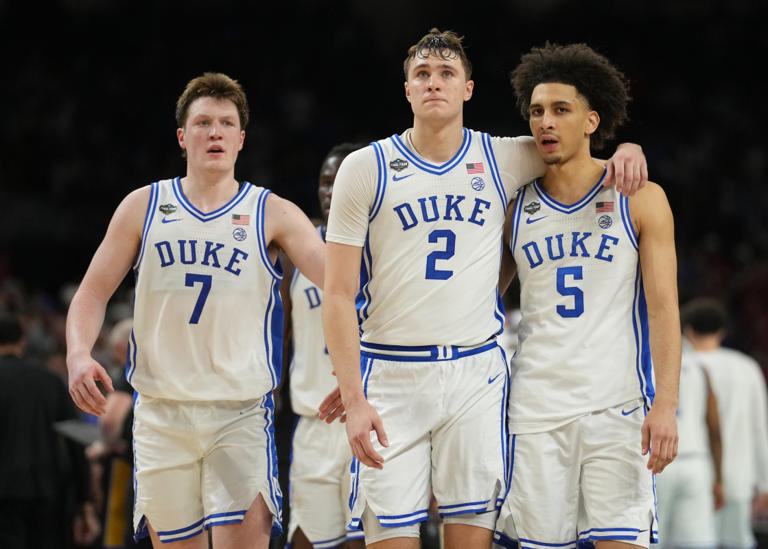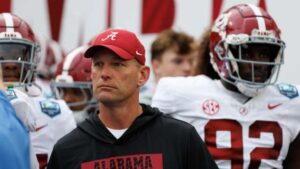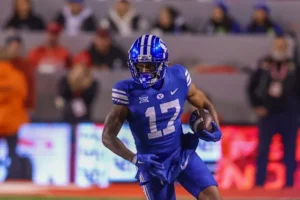
The Duke Blue Devils powered their way to the Final Four in the 2025 NCAA Tournament, and while they ultimately fell to the Houston Cougars after a disastrous final stretch, it marked one of the program’s most successful seasons since their national championship run in 2015. A major factor in that success was a potent combination of elite recruiting, veteran leadership, and the continued evolution of head coach Jon Scheyer in only his third season at the helm. After years of early tournament exits and growing pains in the post-Coach K era, Duke’s 2024–2025 campaign was a statement — not just about their return to form, but about their future.
The Building Blocks: Recruiting and Development
Duke’s season began long before the opening tip in November. The foundation was laid on the recruiting trail, where the Blue Devils once again hauled in one of the nation’s top classes. Highlighted by five-star phenom Isaiah Evans, a versatile wing out of North Carolina, and dominant big man Khaman Maluach, the 7-footer from South Sudan who reclassified to join the team this season, Duke’s incoming talent was as dynamic as it was deep.
But it wasn’t just the freshmen making noise. Sophomore guard Tyrese Proctor returned stronger, both physically and mentally, anchoring the team with poise and leadership. Jeremy Roach, the senior point guard and the last remaining link to the Coach K era, brought invaluable experience and a calming presence during critical stretches. Combine that with key contributions from Mark Mitchell and the emergence of Caleb Foster, and Duke had one of the most complete rosters in college basketball.
The team’s balance of young talent and experienced veterans gave them an edge in high-pressure situations. Their chemistry was evident from early on, as the Blue Devils went 11–2 in non-conference play, including impressive wins against Michigan State and Arizona. The tone was set: Duke wasn’t just good — they were hungry.
The Scheyer Effect
When Jon Scheyer took over as head coach in 2022, many wondered if the former Duke star could fill the massive shoes left behind by the legendary Mike Krzyzewski. His first two seasons were met with growing pains — an up-and-down freshman-led team in Year 1 and a solid but ultimately underwhelming showing in Year 2. But Year 3? That was different.
Scheyer finally molded a team that reflected his coaching philosophy: fast, flexible, and fundamentally sound. He emphasized ball movement, spacing, and aggressive defense — all traits that shined during Duke’s ACC campaign. Under Scheyer’s guidance, the Blue Devils finished 15–5 in conference play, earning a No. 2 seed in the ACC Tournament and eventually a No. 3 seed in the NCAA Tournament.
What stood out most about Scheyer’s coaching this season was his in-game adjustments. Against North Carolina in February, Duke overcame a 12-point deficit by switching to a zone defense and forcing turnovers. In the Sweet 16, facing a surging Illinois team, Scheyer’s decision to go small neutralized Illinois’ frontcourt and gave Duke the tempo advantage it needed to win.
Scheyer’s ability to adapt and empower his players silenced many doubters and showed that Duke’s future is in capable hands.
The March to the Final Four
Duke entered the NCAA Tournament with momentum, riding high after a deep run in the ACC Tournament. Their first-round matchup against UC Irvine was a breeze, with Maluach dominating inside and Proctor orchestrating the offense like a seasoned pro. The Blue Devils followed that with a gritty win over a tough Texas team, in which Roach scored 18 of his 23 points in the second half to seal the victory.
The Sweet 16 saw Duke face Illinois, a team many had picked as a dark horse Final Four contender. But Duke’s depth proved too much. Evans had his breakout moment, dropping 26 points and hitting five threes in what many called a “coming out party.” The Blue Devils cruised to the Elite Eight, where they met Kansas — a battle of blue bloods with a Final Four berth on the line.
The game lived up to the hype. Back and forth for 40 minutes, it was the type of contest that defines careers. Maluach’s defense against Hunter Dickinson was crucial, and Roach once again stepped up in the clutch, hitting a game-winning floater with 12 seconds left. The win sent Duke to its first Final Four in nearly a decade and had fans dreaming of another banner.
Heartbreak in Houston
The Final Four showdown against Houston was supposed to be Duke’s crowning moment — but instead, it was a nightmare finish. The game was tight for most of the night, with neither team pulling ahead by more than seven points. But in the final five minutes, everything unraveled for the Blue Devils.
Sloppy turnovers, missed free throws, and uncharacteristic defensive lapses gave Houston the opening they needed. The Cougars’ veteran backcourt capitalized, going on a 13–2 run to close the game. Duke’s offense, which had looked so fluid throughout the tournament, suddenly stalled. Proctor fouled out, Roach turned the ball over twice, and Maluach missed two key layups. Final score: 72–65. Duke was out.
It was a brutal loss — especially given how close the game had been — but it did little to dampen the significance of the season as a whole.
A Season to Remember
Despite the bitter ending, the 2024–25 season marked a major turning point for Duke basketball. The Final Four appearance was the program’s first since 2015, and it came at a time when many had questioned whether Duke’s dominance had waned. Instead, the Blue Devils proved they were not only back — they were built to last.
Jon Scheyer established himself as a legitimate top-tier coach. His ability to recruit, develop, and lead was on full display all season. The growth of players like Proctor and Maluach, the poise of veterans like Roach, and the flash of freshmen like Evans and Foster gave fans a glimpse of what’s to come. And with another elite recruiting class set to arrive in the fall, the future looks even brighter.
Perhaps most importantly, this season restored the energy around the program. Cameron Indoor Stadium felt alive again — packed, deafening, and electric. The Duke brotherhood was strong, with former players like Jayson Tatum, Zion Williamson, and Grant Hill showing their support throughout the year. The culture was thriving.
With the end of the season comes the inevitable departures. Roach is set to graduate, and Proctor is expected to declare for the NBA Draft. Maluach, too, could be a lottery pick if he tests the waters. But the pipeline remains strong. Incoming recruits like Cooper Flagg — arguably the best high school player in the nation — are ready to step in. Alongside returners like Mitchell and Evans, Duke will once again be a favorite heading into the 2025–26 season.
More than just wins and losses, the 2024–25 campaign re-established Duke as a powerhouse. It reminded fans and opponents alike what the Blue Devils stand for: toughness, tradition, and a relentless pursuit of excellence.
So while the season ended in heartbreak, it was also a revival — a reclaiming of Duke’s place among college basketball’s elite. And if this year was any indication, it’s only the beginning.





